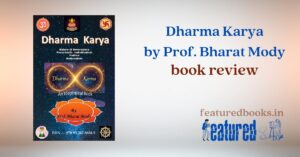Indian English fiction has travelled a long road. It began way back in the times the British were capturing Indian intelligentsia. It continued after they left us. It is continuing in the time we are living right now. It will continue all the time. However the dimensions – breadth and length – have been changing over time. The fiction that began with a simple glimpse into the social settings and strata of the Indian society has changed now to an extrapolation of the ideas that are prevalent. Mediocre novelists like Chetan Bhagat and Durjoy Datta have entirely subverted the class that we once used to have in our fiction – prose fiction. However, there have been the authors whoa re actively working on carrying the traditional attire of a storyteller forward – forwarding and marching and winning reads along the way.
Mostly, the modern outfit that works the best way for the authors is working on some ideas that are related to youth and mostly are shallow with no base buried in intellectual or emotional depths. For example, the novels of Durjoy Datta are nothing but an exaggeration of the idea that youths are nothing but busy in making and breaking relations. A few ideas are there that will keep the readers wondering what are the motifs. Moreover, the novelists are him and others, who write only cheap entertainment for youths and commercial benefits are very popular and surprisingly received among the readers of teen-groups. Are we missing something?
On one hand, there are the authors like Ashwin Sanghi and Jeet Thayil who are more than busy in producing literature that may be beneficial for the readers in order to understand what actually prose fiction should be like. On the other, we have new and emerging authors who are ready to take the challenge that market and reader bases pose to them. For example, an author like Ravi Dabral, with just one novel to his credit, has managed to be seen as one of the best crime thriller novelists in India with his title Greed Lust Addiction, a novel that fuses spirituality with a crime thriller and successfully drives the ideas raised to a conclusion.
At the same time, we will have to accept that traditional novelists in India could not move their pieces according to the moments and they have lagged behind in the race. Their characters are mostly from the class which is not viable for the common readers with the middle class and general education background to connect. The novelists who write the so-called commercial and youth-oriented fiction are more connected to their audience rather than these novelists with big names and no audience. This is a reality that we all will have to accept and move on with.
It has to be a balance that we need to bring in the Indian literary context. We have to compete globally for the prestigious awards and we also have to improve the content that we produce. So, one can assume that there are the authors who are writing for the local audience and there are the ones who are writing for the global audience but still unable to fetch important awards for us. Amitav Ghosh may be an example for the latter category and Nikita Singh may be an example for the first category. The role of some of the Indian Book Review websites will also have to be important if they want the readers to improve their reading habits and authors to improve their content – they will have to be objective in their book reviews.



